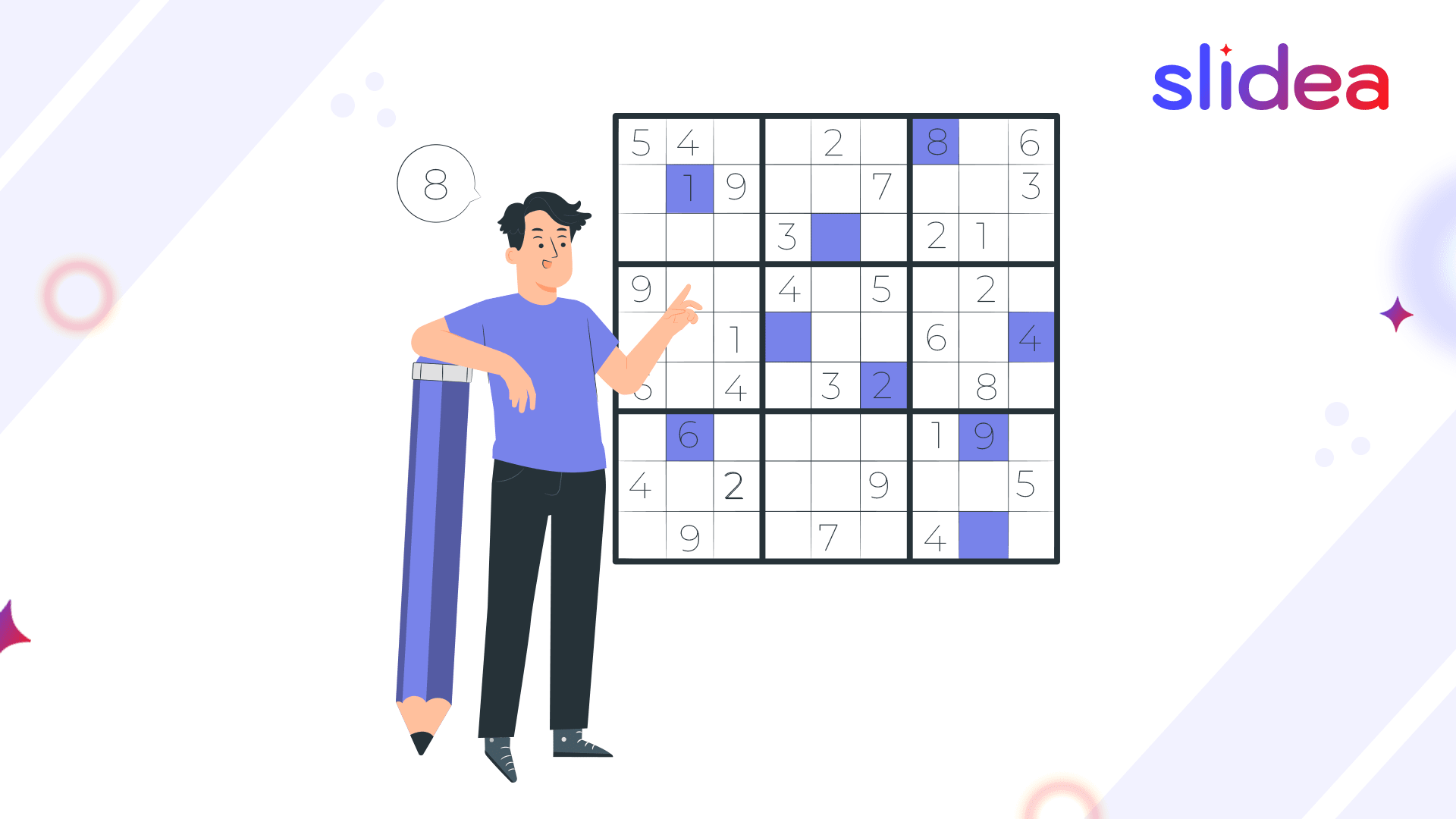“Logic will get you from A to B. Imagination will take you everywhere.” – Albert Einstein
Sudoku may seem like just a numbers game, but it’s a powerful brain workout that sharpens logic, focus, and problem-solving.
If you’ve ever looked at a Sudoku puzzle and felt confused, don’t worry. This blog is for total beginners. We’ll break it down step-by-step, show you how to solve your first puzzle, and even share tips for practicing Sudoku with interactive game tools that make it more fun and engaging.
What Is Sudoku?
Sudoku is a logic-based number puzzle. You get a 9×9 grid, divided into nine smaller 3×3 boxes. Some numbers are already filled in. Your goal? Fill the rest of the grid with numbers from 1 to 9, but:
- Each row must have all numbers 1 to 9 without repeating.
- Each column must have all numbers 1 to 9 without repeating.
- Each 3×3 box must have all numbers 1 to 9 without repeating.
Sounds tricky? It’s not as hard as it looks. Once you understand the rules, solving Sudoku becomes fun and a little addictive too!
How to Play Sudoku: Simple Tips for First-Time Players
Step 1: Understand the Grid
- The full grid has 81 squares (9 rows × 9 columns).
- It’s divided into nine 3×3 boxes.
- Some numbers are already filled in; these are clues.
Step 2: Start with the Obvious
- Look at rows, columns, and boxes with the most numbers already filled in.
- Find which number is missing. Try placing it where it logically fits.
Step 3: Use the “Pencil In” Method
- Not sure where a number goes?
- Lightly write possible numbers in empty cells.
- This helps you test ideas without committing.
Step 4: Rule Out Incorrect Spots
- A number can’t be repeated in a row, column, or box.
- If a number’s already in the same row or box, it can’t go there.
Step 5: One Box at a Time
- Focus on one 3×3 box.
- Try completing it using logic, not guessing.
Step 6: Take Breaks
- If you’re stuck, take a short break and come back with fresh eyes.
- Beginners often make progress after stepping away.
Step 7: Practice with Easy Puzzles First
- Try “Easy” or “Beginner” mode in free Sudoku apps or printable sheets.
How Sudoku Builds Brain Power
Solving Sudoku trains your brain. It improves:
- Focus: You need to concentrate to keep track of numbers.
- Memory: You’ll start to remember patterns and strategies.
- Patience: You learn to think before acting.
It’s great for students, teachers, and professionals looking to sharpen their thinking in a relaxing way.
Common Sudoku Mistakes (And How to Avoid Them)
- Guessing Too Soon
Always use logic. Guessing leads to errors later in the game. - Forgetting to Check Boxes
Don’t just look at rows and columns, check 3×3 boxes too. - Rushing the Game
Sudoku rewards careful thinking. Slow down and double-check. - Not Using Pencil Marks
Notes are your best friend. They help you plan ahead.
Make Sudoku Interactive and Fun
With Slidea, Sudoku becomes more than just a solo puzzle; it turns into a shared experience that boosts engagement in learning sessions, team workshops, or online group activities.
Here’s how you can make Sudoku interactive using Slidea:
- Live Polls: Let your audience vote on the correct number to place in a cell. It’s a great way to involve everyone at once.
- Quizzes: Turn Sudoku into a fun challenge by asking questions with correct answer choices and setting timers. Teams or players can pick the right number for each cell, making it a fast-paced and logic-building activity.
- Open-Ended Questions: Ask participants to explain their reasoning, like which logic rule they used or why a number fits in a certain spot.
- Game Features: Use built-in timers, leaderboards, and points to create friendly competition and keep the energy high.
By using our interactive game tool, you can turn a simple Sudoku puzzle into a fun, collaborative activity that sparks critical thinking and audience participation.
Final Thoughts
Sudoku is more than a puzzle; it’s a fun way to build logic, focus, and teamwork. Try solving a beginner puzzle on paper, or turn it into a group challenge using an interactive activity tool. It’s simple, engaging, and great for learning together.
And remember, dreaming big isn’t just for kids; it’s for anyone ready to grow and take action. Add an inspiring quote to your next session to spark new ideas and fresh thinking. When you mix logic with motivation, great things can happen.
FAQs
1. What is the goal of Sudoku?
To fill every row, column, and 3×3 box with numbers 1 through 9 with no repeats.
2. Is Sudoku a math game?
No math is required! It’s a logic puzzle. The numbers are symbols; you don’t add or subtract them.
3. Can kids learn Sudoku?
Yes. Kids as young as 6 or 7 can start with easy 4×4 puzzles before moving to bigger ones.
4. Do I need special software to play Sudoku?
Not at all! You can play with paper and a pencil. But to make it for groups, use interactive presentation tools like quizzes and live polls.
5. What if I get stuck?
Take a break, check your notes, and focus on one part of the grid. Practice makes it easier over time.




Leave a Comment
Your email address will not be published. Required fields are marked *